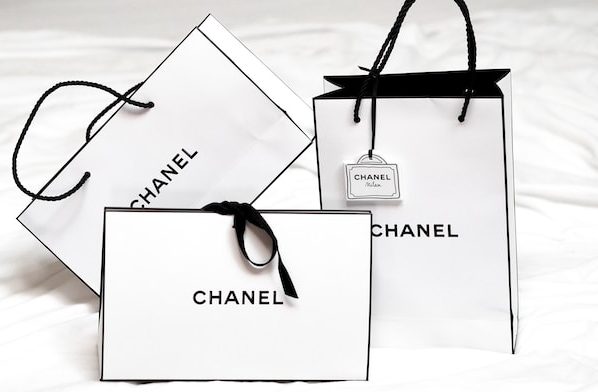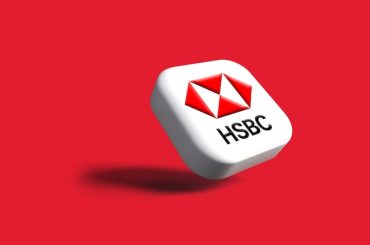Before we dive deep into the PESTEl analysis, let’s get the business overview of Chanel. Chanel is a private company and a luxury brand that primarily operates in the fashion industry. The company is renowned for its high-quality products, ranging from haute couture clothing, ready-to-wear clothes, luxury goods, and fashion accessories to beauty products and fragrances.
The company was established in 1910 by Gabrielle “Coco” Chanel in Paris, France. It has since grown to become one of the most prestigious fashion houses in the world. The iconic “little black dress,” the Chanel No. 5 perfume, and the classic Chanel suit are among its most famous creations.
Chanel operates in several sectors:
- Fashion: This includes both haute couture, which involves creating exclusive custom-fitted clothing, and prêt-à-porter, or ready-to-wear collections. Their fashion lines are showcased in major fashion weeks across the globe, especially Paris Fashion Week.
- Beauty: This sector includes producing and selling cosmetics, skincare products, and fragrances. The Chanel No. 5 perfume, released in 1921, remains one of the best-selling perfumes of all time.
- Accessories: This includes a wide range of products, such as handbags, shoes, eyewear, jewelry, and watches. Chanel’s quilted leather handbags, with their distinctive chain straps, are globally recognized as a symbol of luxury and sophistication.
- Watches and Fine Jewelry: Chanel also operates in the high-end jewelry and watch sector, producing items often crafted with precious metals and gemstones.
Building a Legacy: Chanel’s Luxury Marketing Strategy
Chanel’s business model is based on selling through boutiques owned directly by the brand (vertical integration), high-end department stores, and their official website. As of 2023, Chanel had not engaged in franchising, maintaining control over its product quality, brand image, and distribution channels.
The company’s strategic decisions and financials are closely guarded, given its status as a private company. However, Chanel has consistently demonstrated resilience and growth in the luxury market.
Financial Performance:
- 2022 financial results driven by strong client demand across all product lines, reaffirming the desirability of Chanel’s creations
- Revenues of $17.2 billion, up 17% versus 2021 on a comparable basis at constant currency.
- Operating profit of $5,776 million, an increase of 5.8% compared to 2021.
- Capital expenditure at $668 million, representing 3.9% of sales.
- Free cash flow of $3,534 million
Here is the PESTEL analysis of Chanel
A PESTEL analysis is a strategic management framework used to examine the external macro-environmental factors that can impact an organization or industry. The acronym PESTEL stands for:
- Political factors: Relate to government policies, regulations, political stability, and other political forces that may impact the business environment.
- Economic factors: Deal with economic conditions and trends affecting an organization’s operations, profitability, and growth.
- Sociocultural factors: Relate to social and cultural aspects that may influence consumer preferences, lifestyles, demographics, and market trends.
- Technological factors: Deal with developing and applying new technologies, innovations, and trends that can impact an industry or organization.
- Environmental factors: Relate to ecological and environmental concerns that may affect an organization’s operations and decision-making.
- Legal factors: Refer to the laws and regulations that govern businesses and industries.
In this article, we will do a PESTEL Analysis of Chanel.
PESTEL Analysis Framework: Explained with Examples
Political
- Trade and Tariff Policies: As a global luxury brand, Chanel operates in various countries, each with its trade and tariff policies. Changes in these policies can affect the import and export of Chanel’s products, impacting costs, pricing, and supply chain strategies.
- Political Stability: The political stability of countries where Chanel operates or sources its raw materials is crucial. Unstable political environments can disrupt the supply chain, threaten the safety of employees, and affect sales. For instance, political unrest in a country can lead to store closures or reduced tourist shopping.
- Counterfeit Goods and Intellectual Property: Political environments that do not enforce strict intellectual property laws can challenge luxury brands like Chanel, as this can lead to an influx of counterfeit goods. These counterfeit products dilute the brand value and can result in financial losses.
- Taxation Policies: Changes in corporate taxation, value-added tax (VAT), or luxury taxes can influence Chanel’s pricing strategies, profitability, and market attractiveness. For instance, a country with high luxury taxes might deter some consumers from purchasing luxury items.
- Geopolitical Tensions: As a global brand, Chanel can be affected by geopolitical tensions between countries. For example, strained relations between countries can lead to boycotts or restrictions on foreign goods, which can impact sales.
- Government Initiatives: Some governments promote domestic industries and products over foreign brands. Such initiatives can influence consumer preferences and the overall competitive landscape. Conversely, government initiatives promoting foreign investment can benefit brands like Chanel.
- Cultural Diplomacy: Luxury brands like Chanel play a role in cultural diplomacy. Often, they are considered representations of national identity and soft power. Hence, the relationship between governments and luxury brands, especially in the country of origin (France, in Chanel’s case), can be symbiotic.
Economic
- Economic Growth: The health of the economies where Chanel operates affects purchasing power. In booming economies, consumers might have higher disposable incomes, leading to increased luxury goods sales. Conversely, during economic downturns, luxury purchases might decline.
- Exchange Rates: Chanel operates globally, making it sensitive to fluctuations in exchange rates. A strong euro can make Chanel products more expensive in non-Euro countries, potentially affecting sales. Conversely, a weak euro can be beneficial for boosting sales in non-Euro zones.
- Inflation Rates: Inflation can increase raw materials, manufacturing, and operations costs. It can also impact the purchasing power of consumers. Chanel must consider whether to absorb these increased costs or pass them on to the consumer.
- Interest Rates: Interest rates influence borrowing costs. If Chanel is considering expansion or investment and needs to borrow funds, higher interest rates can lead to increased borrowing costs.
- Disposable Income Levels: High disposable income levels in a particular market can indicate potential for luxury purchases, as consumers have more money left after essential expenses.
- Unemployment Rates: High unemployment can decrease the purchasing power of the general populace, leading to reduced sales of luxury items.
- Emerging Markets: The rise of new economic powerhouses offers opportunities for luxury brands. For instance, the burgeoning middle and upper classes in countries like China and India present lucrative markets for luxury brands like Chanel.
- Shifts in Luxury Consumption: Economic trends like the rise of experiences over material possessions can impact the luxury goods sector. If consumers prioritize travel or experiences over luxury items, brands like Chanel may need to adapt their offerings or marketing strategies.
Sociocultural
- Changing Consumer Values: As societal values shift, luxury brands must adapt. For instance, an increasing emphasis on sustainability, ethical production, and transparency might prompt Chanel to highlight and improve its own sustainable and ethical practices.
- Fashion and Beauty Trends: Chanel operates in industries driven by trends. Recognizing and leading these trends while respecting their iconic branding is essential. What’s popular in one culture or age group might not be in another.
- Cultural Sensitivities: Operating globally means Chanel must be attuned to cultural nuances. Missteps, such as culturally insensitive campaigns, can harm the brand’s reputation.
- Shift towards Digital: With the growing influence of social media and e-commerce, Chanel must balance its traditional luxury in-store experience and the digital realm. This also ties into the influence of online influencers and fashion bloggers on consumer choices.
- Attitudes Toward Luxury: The perception of luxury and its significance can vary. In some cultures, luxury goods might be seen as a status symbol, while in others, there might be a growing emphasis on minimalism or experiences over possessions.
- Gender Norms and Roles: As global conversations around gender evolve, Chanel may need to adapt its product lines, marketing campaigns, and overall brand messaging to reflect more inclusive and progressive attitudes.
- Consumer Awareness: Today’s consumers are more informed about brands, their practices, values, and histories. This can influence purchasing decisions, making it important for Chanel to uphold and communicate its values effectively.
- Brand Heritage and Storytelling: The stories brands tell, and their heritage can be a significant pull factor. For Chanel, its rich history and iconic founder, Coco Chanel, are integral to its brand image.
- Lifestyle Preferences: Whether it’s the move towards casual work attire, urban living, or wellness trends, changing lifestyle preferences can influence which products or collections become popular.
Technological
- E-commerce Platforms: With the rise of online shopping, Chanel needs a strong e-commerce presence to reach a global audience. This includes user-friendly interfaces, secure payment gateways, and efficient logistics.
- Augmented Reality (AR) and Virtual Reality (VR): AR and VR offer potential in the fashion industry, allowing customers to “try on” products virtually, experience fashion shows in immersive environments, or explore virtual brand spaces.
- Artificial Intelligence (AI): AI can be employed in various ways – from chatbots offering customer support on their website to predictive analytics determining future fashion trends or personalizing the shopping experience for individual customers.
- Supply Chain Management: Technological tools can help streamline the supply chain, ensuring timely delivery of materials, monitoring product quality, and enhancing efficiency.
- Sustainability Technologies: As the focus on sustainability grows, technologies that help create sustainable fabrics or reduce the environmental impact of production processes become critical for luxury brands.
- Wearable Technology: As fashion intersects with tech, there’s potential for luxury brands to collaborate or innovate in areas like smart garments or accessories.
- Data Analytics: Understanding consumer behavior through data can offer invaluable insights. This can help Chanel in product development, targeted marketing campaigns, and inventory management.
- Anti-counterfeit Technology: Counterfeiting is a significant issue for luxury brands. Technological solutions, from unique product identifiers to blockchain, can help authenticate products and combat counterfeiting.
Environmental
- Sustainability: There’s a growing demand from consumers for sustainable products. This can translate to sustainable sourcing of raw materials, eco-friendly production processes, and sustainable packaging for Chanel.
- Regulations and Compliance: Governments worldwide are implementing stricter environmental regulations. Chanel must ensure that its production processes, waste management, and overall operations comply with these regulations.
- Carbon Footprint: As brands are increasingly held accountable for their carbon emissions, Chanel might need to look into ways to reduce its carbon footprint, whether that’s through renewable energy sources, efficient logistics, or other measures.
- Waste Management: From production waste to post-consumer waste (like packaging), managing and reducing waste is becoming a significant concern. Luxury brands can face backlash if they’re perceived as wasteful or non-recyclable.
- Animal Rights: Many luxury brands have faced criticism for their use of animal-derived products. Chanel would need to navigate its use of materials like fur, leather, and certain cosmetics ingredients to ensure they’re ethically sourced or consider alternative materials.
- Water Usage: Significant amounts of water can be used in fashion and cosmetics production. Efficient water use and recycling can become crucial, especially in water scarcity regions.
- Supply Chain Transparency: Consumers and stakeholders are demanding transparency in the supply chain to ensure that products are sourced and manufactured in an environmentally friendly and ethical manner.
- Shift to Green Technologies: Embracing green technologies in production facilities, stores, and other operations aspects can reduce environmental impact and lead to cost savings in the long run.
Legal
- Intellectual Property Rights: Being a fashion and beauty brand, Chanel would place great importance on protecting its designs, logos, and trademarks. This ensures that counterfeits or infringements can be legally challenged.
- Consumer Protection Laws: These laws vary by country and can affect product standards, advertising practices, and product returns or refunds.
- Employment Laws: Chanel operates in multiple countries, each with its own set of labor laws concerning wages, working conditions, and employee rights. Compliance is crucial to avoid legal disputes and maintain a positive brand image.
- Trade and Tariff Regulations: As an international brand, Chanel would need to navigate tariffs, import/export regulations, and customs duties that can impact the pricing and availability of products in various markets.
- Advertising and Branding Regulations: Different countries have varying rules about what can be claimed in advertisements, using certain images, or portraying specific demographics.
- Anti-competitive and Monopoly Regulations: Luxury brands, especially those with significant market share, must ensure they aren’t violating anti-competitive laws.
- Animal Testing Laws: Many countries are moving towards banning cosmetics that are tested on animals. Chanel would need to ensure its products are compliant, especially if they want to market them as cruelty-free.
- Taxation Laws: With operations in various countries, understanding and complying with local taxation laws and avoiding issues like tax evasion or unfavorable tax schemes is crucial.









